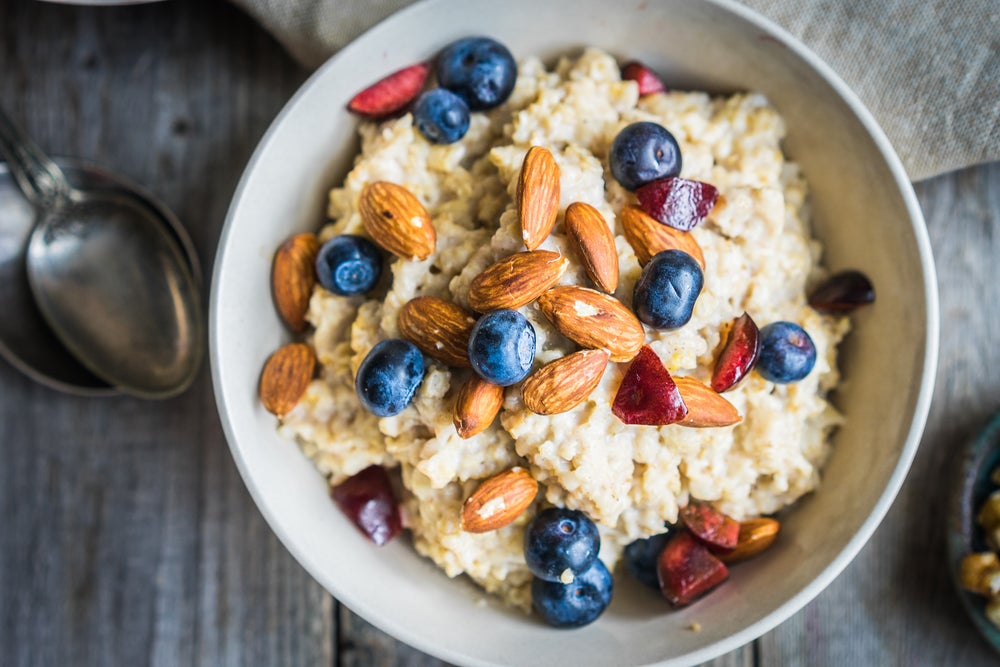How To Overcome "Carbophobia"

Not all carbs are created equal. Photo: Shutterstock.com
According to a recent Gallup survey, 29 percent of Americans try to avoid eating carbohydrate. This negative attitude toward carbs has been trending upward ever since Gallup began tracking such data in 2003. In 2005, physician and author Michael Greger gave the phenomenon a name: carbophobia.
The force behind the growing fear of carbs is a kind of para-scientific institution comprised of popular diet books such as Wheat Belly and diet programs like No Sugar No Grains. What almost all public advocates of carbohydrate avoidance have in common is that they are not credentialed nutrition scientists. Among the professionals who actually conduct publishable research on the health effects of carbohydrate, exceedingly few come down on the side of carbophobia.
Where does this dichotomy come from? It comes from what Michael Pollan, author of The Omnivore’s Dilemma, calls nutritionism—the mistake of judging diets not by the foods they include but rather by their nutrient composition. To understand how nutritionism feeds into carbophobia, consider the two diets represented here:
Diet 1
Breakfast: Glazed Donut, Starbucks Grande, caramel macchiato
Lunch: Peanut butter and jelly sandwich on white bread, milk chocolate bar, can of soda
Dinner: Spaghetti O’s, canned peaches, sweetened ice tea
Diet 2
Breakfast: Old-fashioned oatmeal with blueberries and almonds, fresh-squeezed orange juice, coffee with milk.
Lunch: Split pea soup, 1/2 turkey and veggie sandwich on whole wheat bread, tomato juice, apple
Dinner: Two-bean pumpkin chili, brown rice with garlic and butter, red wine, peach
It doesn’t take a PhD in nutrition science to see that these two menus are rather different. Diet 1 is made up entirely of processed foods and sweets. Diet 2 is composed of natural, whole foods such as vegetables, fruit, and whole grains. But in other ways the two diets are identical. They happen to contain exactly the same amounts of calories and carbohydrate grams, and in both diets carbs account for 68 percent of total calories. From a scientific (and a common sense) perspective, Diet 2 is significantly healthier than Diet 1. From the perspective of anti-carb nutritionism, however, Diet 1 and Diet 2 are indistinguishable and equally unhealthy.
Advocates of general carbohydrate avoidance argue that eating carbs—regardless of where they come from—causes negative health effects that include weight gain and type 2 diabetes. This is simply not true. The best and most current science proves that only certain high-carb foods—namely sweets, sugary drinks, and refined grains—are associated with negative health outcomes, whereas other high-carb foods—particularly fruits, whole grains, and dairy (whole milk contains 12 grams of carbs per 8-ounce serving)—are beneficial to health.
In 2011, the New England Journal of Medicine published the results of a massive study by Harvard researchers on the effects of different food types on long-term weight gain. The average subject among the more than 120,000 men and women included in the study gained 3.35 lbs every four years for twenty years. Those who increased their consumption of sugary beverages during any given four-year period gained an additional pound. But those who increased their consumption of whole grains gained 0.37 pounds less, while increased fruit consumption reduced four-year weight gain by 0.49 pounds and yogurt reduced it by 0.82 pounds.
Consumption of whole-milk based dairy products is associated with reduced risk of developing type 2 diabetes. This link was demonstrated most recently in a study where nearly 27,000 men and women between the ages of 45 and 74 were tracked for 14 years. During this time period, those who consumed the most dairy were 23 percent less likely to become diabetic.
Whole grains have been shown not only to help prevent type 2 diabetes but also to treat it. In 2014, Italian researchers reported that subjects placed on a grain-heavy macrobiotic diet exhibited greater improvements in fasting glucose levels and insulin resistance compared to subjects placed on the standard dietary treatment. Other studies have shown that people who eat a lot of whole grains also have a lower risk for heart disease and even live longer than others, while a high intake of fruit has been shown to increase lifespan as well.
This is not to say that you can’t be very healthy on a relatively low-carb diet. But it is an irrefutable scientific fact that if you include certain high-carb foods in your diet—namely fruit, whole grains, and dairy—you’re likely to be healthier. What’s more, as a runner, you’re likely to perform better in workouts and races if you make these high-carb whole foods staples in your diet.
The latest proof of this comes from a brand new study by Brazilian researchers, who reported that 19 adolescent boys completed a 10K race more than 2 minutes faster on a 70 percent carb diet than they did on a 25 percent carb diet. Critics have pointed out that the subjects in this study weren’t given adequate time—only 48 hours—to adapt to each diet—but other studies extending up to four weeks have produced similar results. So unless you’re afraid of running your best and living a long and healthy life, don’t be afraid of carbs—just choose your sources carefully.
RELATED: The 10 Best Carbohydrate Sources For Endurance Athletes